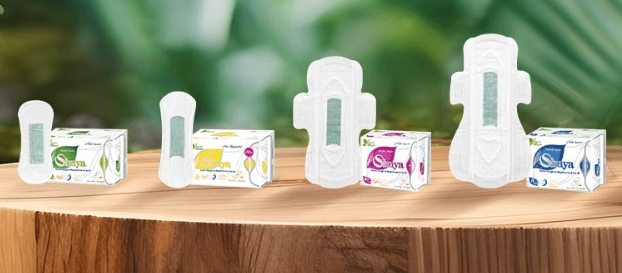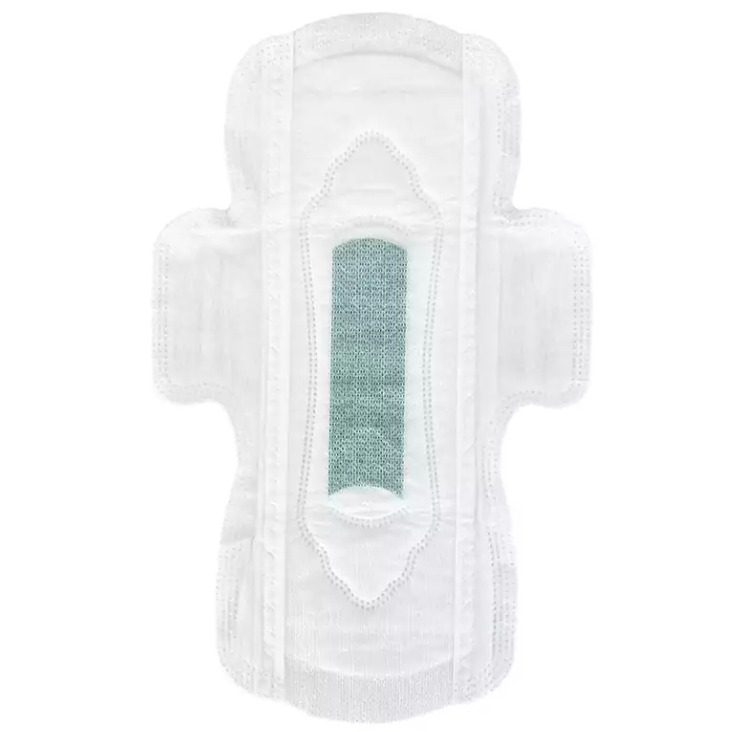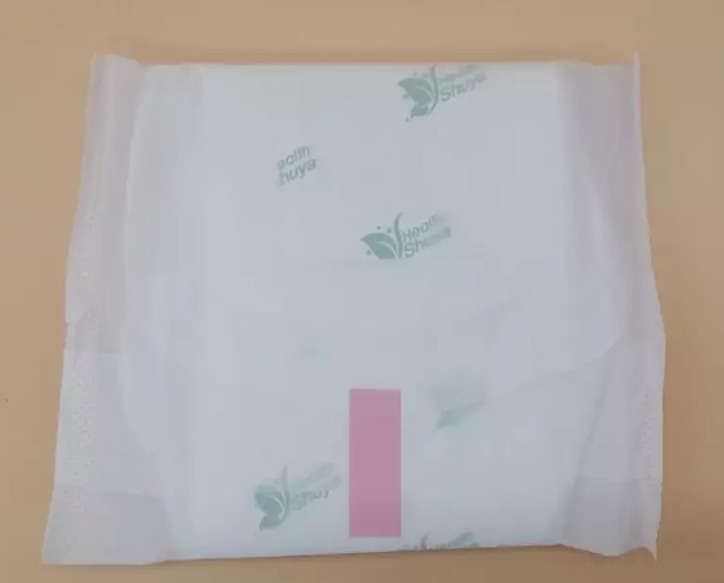Understanding the intricacies of how sanitary pads are made is crucial for ensuring quality and safety. In the manufacturing process, rigorous evaluations of raw materials, precise equipment control, and strict sterilization are pivotal. Regular quality inspections further enhance pad dependability. This comprehensive comprehension of the production stages is essential for achieving top-notch quality and safety in sanitary pad manufacturing.

The Sanitary Pad Structure and Functions
Knowing how sanitary pads are made reveals a complex structure for optimum functionality.
1. The Top Sheet
It is made from non-woven fabric bearing an emollient finish and allows fluid to pass through quickly while remaining soft to the skin.
2. The Absorbent Core
The majority of sanitary pads incorporate fluff pulp/ SAP as the primary component in their absorbent material. The absorbent core located beneath the acquisition layer serves the purpose of storing fluids.
3. The Impermeable Backing
It is a polyethylene film, averts leakage, and includes an adhesive for secure placement. It is covered with a release paper before use.
Collectively, these components are combined for relaxation, effectiveness, and hygiene.

What Material Is Needed to Make Sanitary Pads
1. Absorbent Materials (Fluff Pulp, SAP)
In sanitary pads, absorbent materials are vital. Fluff pulp is derived from softwood trees and is a primary component for a natural, fiber-based structure that expedites fluid absorption. SAP might be made from sodium polyacrylate and retain large volumes of liquid relative to mass. It ensures pads absorb menstrual fluid and renders them key in how sanitary pads are made. The materials are chemically and mechanically treated for absorbency and stability.
2. Polymeric Materials (PE, PP, and PET)
The average sanitary napkin is comprised of PE, PP, and PET[1], which are essential in sanitary pad construction for the back and top sheets. PE offers flexibility and moisture barrier properties and forms a leak-proof back layer. Conversely, PP has a soft texture and breathability and is used for the top sheet. PET is less common but still utilized while providing additional strength and stability. These materials are chosen for comfort, safety, and usefulness in how sanitary pads are made.
3. Adhesives
Adhesives in sanitary pads secure the layers together and attach the pad to the underwear. These adhesives are hot-melt types for structural integrity while being safe for skin contact. Makers modify the adhesive’s composition to balance strength, flexibility, and ease of removal. Thus, the pad remains in place without leaving residues. The choice and application of adhesives are key aspects of how sanitary pads are made, which impacts user experience and product performance.
4. Release Material (Release Paper)
The release material, or release paper, plays a vital yet often overlooked role in sanitary pad production. The paper is coated with a silicone-based release agent for stress-free removal from the adhesive back of the pad. It protects the adhesive before use so the pad adheres effectively. The release paper must balance ease of removal with protective qualities. Although simple, the component is an authentication to the exhaustive engineering of how sanitary pads are made.
The Production Process of Sanitary Pads
1. Preparation of Raw Materials
The first step in “how sanitary pads are made” is about raw materials. As mentioned earlier, the main ingredients are superabsorbent polymers, fluff pulp, polymeric materials, adhesives, and release paper.
2. Formation of the Absorbent Core
The indigenous process unfolds: first, the cellulose pulp finds its place within a machine, where rotating knives meticulously transform the pulp into a delicate fluff. Next, a blend of this fine fluff and SAP powder is fed into a core-forming machine, meticulously fashioning the layers of pads. A strip of SAP-infused paper is then interwoven between these layers, amplifying the efficacy of the absorbent core. This integration ensures the uniform distribution of fluids and guards against any potential leaks.
Following this, the absorbent core advances to the subsequent phase, where it undergoes a covering process using a machine that adds a layer of cotton. This supplementary layer not only bolsters durability but also fortifies the absorbent core, shielding it from easy tearing.
3. Application of Protective Layers
The next production step is creating the top sheet, the fabric layer in direct contact with the body, usually soft like cotton for comfort. It’s perforated for fluid absorption by the absorbent core. Sanitary pads can be winged or wingless, with wings made of soft fabric and adhesive to keep the pad in place during use. After making the top sheet, the outer layer in contact with clothes is laminated with plastic or polyethylene to prevent fluid leakage and clothes staining.
4. Packaging
Packaging preserves product quality and shelf life. Sanitary pads are covered with polyethylene for cleanliness and moisture protection. This step calls for automation to fold and wrap pads precisely. For user convenience, wrapped pads are combined and put into cartons or pouches with resealable characteristics. Sustainable brands may employ recyclable or biodegradable packaging. Regulatory-compliant packaging includes user instructions and material information.

Conclusion
Shuya, a sanitary pad wholesaler, ensures quality in every step of how sanitary pads are made. Standardized management and top international standards, including FDA, CE, ISO9001, SGS, CNAS, and MSDS, assure top-notch product quality. Our 55 million sanitary pads and 155 million panty liners are tested monthly for safety and effectiveness. Our contemporary production lines, reinforced by our micro-magnetic sanitary napkin patent and position as a national high-tech firm, demonstrate our dedication to innovation and manufacturing excellence. We improve our processes using lean manufacturing for the greatest quality in every product we supply worldwide. As your reliable one-stop OEM/ODM manufacturer and exporter of personal care hygiene products, Shuya is dedicated to providing trustworthy solutions.
Reference
[1] Sanitary Napkin. Available at https://www.sciencedirect.com/topics/engineering/sanitary-napkin (Accessed on January 29th, 2024)

